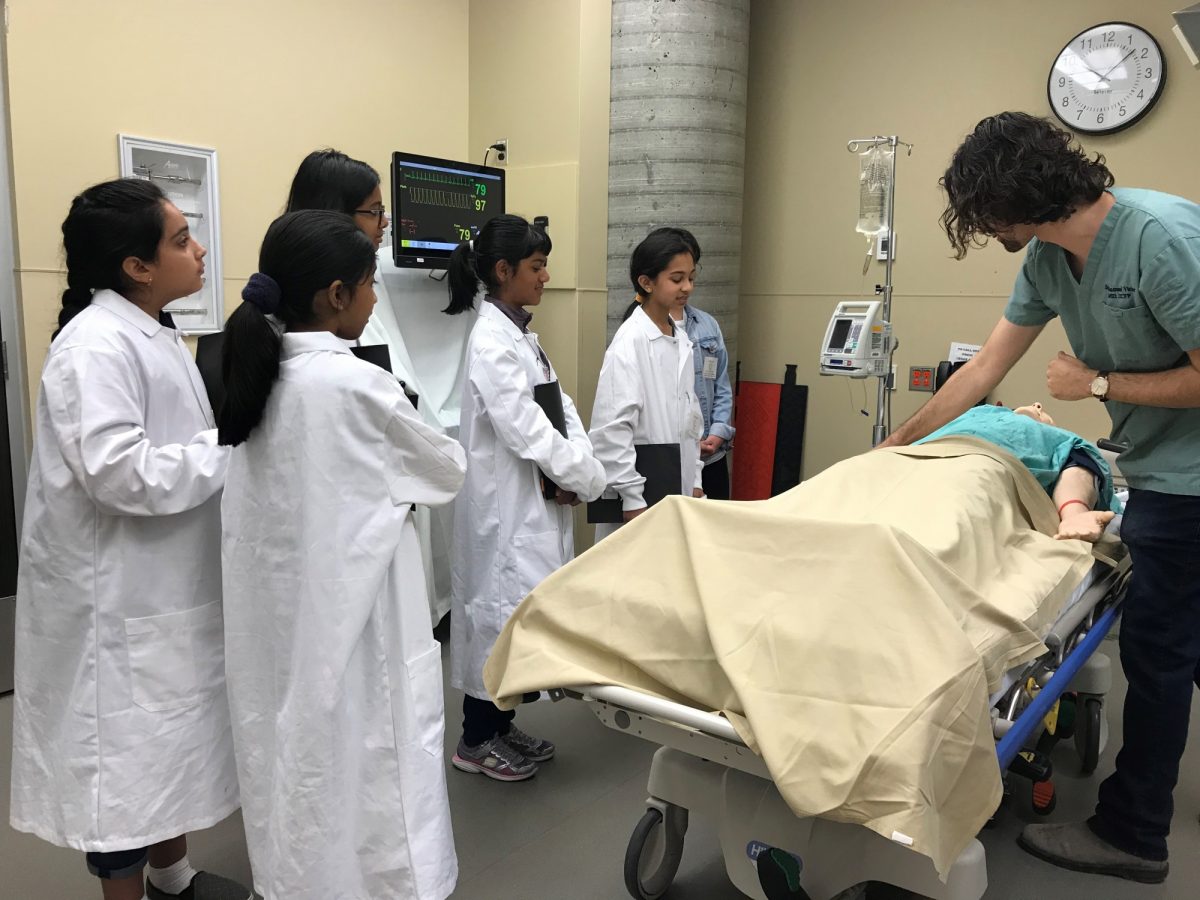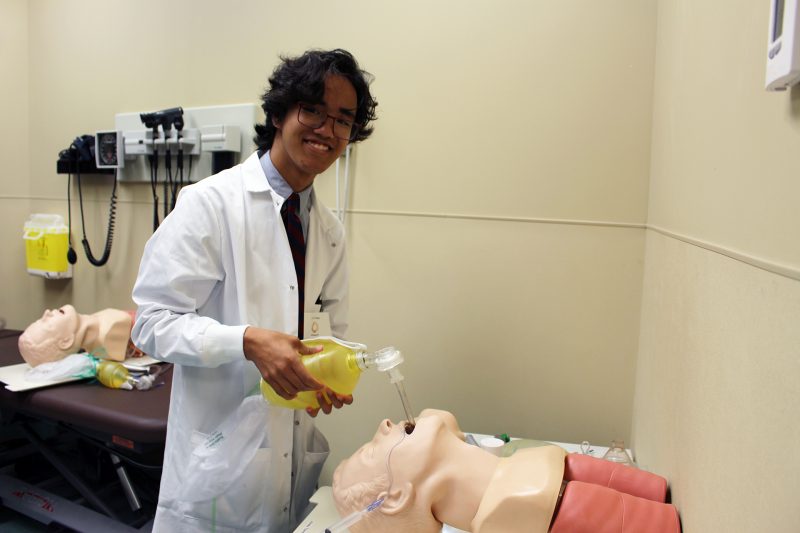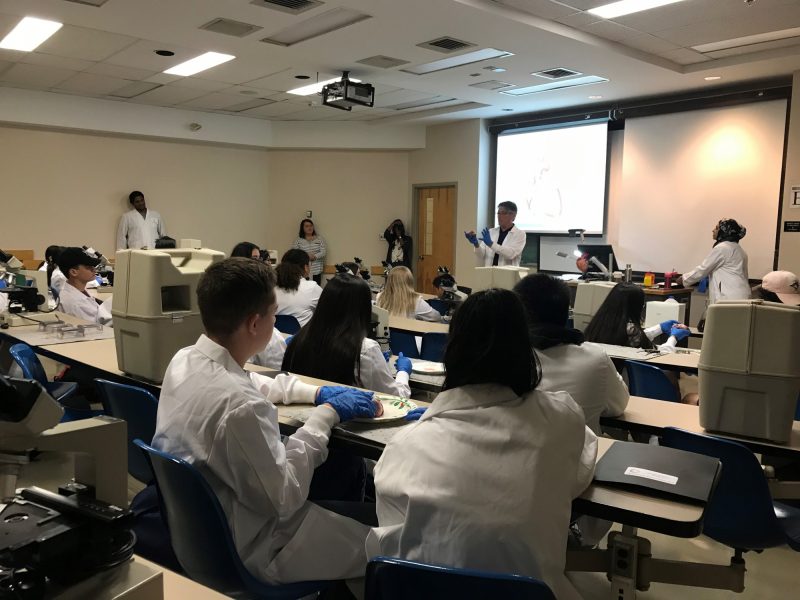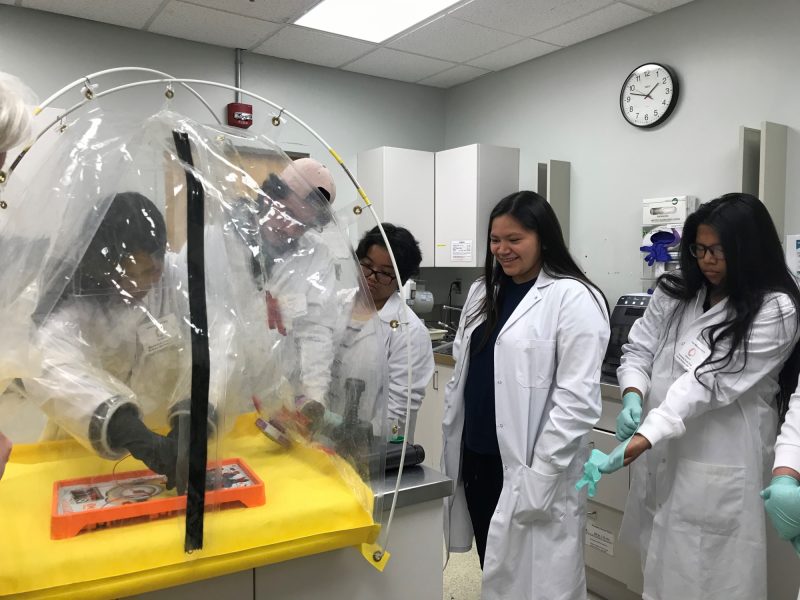
BYP Camp engages kids in science by rousing their curiosity
This week, 160 students from Grades 5 to 12 trained like health-care professionals at the Rady Faculty of Health Sciences’ annual Biomedical Youth Program (BYP) summer camp. As with previous years, the faculty hosted visiting high school students from northern communities as part of the Health Careers Quest Summer Camp.
The volunteers, comprising undergraduate and graduate students, faculty and staff were enthusiastic about sharing their passion for science with the young students.
“We offer the biomedical camp to pique the curiosity of kids through thought-provoking activities that make science relevant to their lives,” said Dr. James Gilchrist, the program’s director and a professor of oral biology in the Dr. Gerald Niznick College of Dentistry. “It’s part of how the U of M connects with the community and shows young people that careers in the health sciences are within their reach.”
Harjasmin Mander, who graduated this spring with a B.Sc. in biochemistry, led a session on enzymes and digestion. She said she volunteers with the camp because she wants to show the students that science can be exciting.
“I want the children to learn how to think like a scientist, think critically and be curious,” Mander said, “Bench to bedside is a common saying in the medical community, and we want to show the kids that it’s not just what you learn, but how you apply it to patients.”
For the first time, the National Microbiology Lab participated in the camp, giving the students the opportunity to explore how scientists work in biocontainment labs to control infectious diseases.
The students experienced what it is like to work in a level 4 BioSafety mobile lab by doing hands-on activities, learned about what types of careers they can pursue in public health research, and participated in a game where they had to guess whether a word given was a “pathogen or Greek city.” Volunteers from the lab also demonstrated the use of a positive pressure suit.

A panel of representatives from the various colleges in the Rady Faculty of Health Sciences answer questions from camp attendees.
This year’s camp also featured a new panel session with representatives from medicine, nursing, dentistry, pharmacy, occupational therapy, respiratory therapy and clinical health psychology. Students were able to ask questions and learn about what a career in health sciences entails. The panelists answered questions about how they separate work life from their personal life, what the biggest misconceptions are about their professions and what future advancements they are most excited about in their field.
A highlight of the week-long camp were the hands-on workshops in the Clinical Learning and Simulation Facility (CLSF) – a simulated hospital environment in which the “patients” are high-tech, computer-controlled manikins. The exercise was designed by medicine, nursing and occupational therapy staff to simulate what a typical day looks like for someone in a health profession and demonstrate how the various professions work together to deliver care to patients.
Students learned to take a patient’s blood pressure, give an EpiPen injection, perform CPR and use an ultrasound machine.
Vladan Protudjer, an Instructor II at the College of Nursing and first-time volunteer, said he jumped at the opportunity to help out with the simulation exercises.
“It’s a great way for younger generations to get exposed to the health sciences,” he said, “We hope it will stir up curiosity, imagination, and a willingness to pursue sciences and medical fields. We want them to think about their hopes, dreams, and aspirations and learn how to adequately plan what educational path to take in the future if they decide to go into a health sciences stream.

Camp attendee Sean Ticsay practices his intubation skills at the Clinical Learning and Simulation Facility.
Sean Ticsay, a 15 year old camp attendee, said his favourite part of the camp was the CLSF exercise. “I want to be a surgeon one day. My favourite part was getting to do an intubation. I’m more of a hands-on person, I liked working with people and patients to save a life and feeling the rush of adrenaline.”








